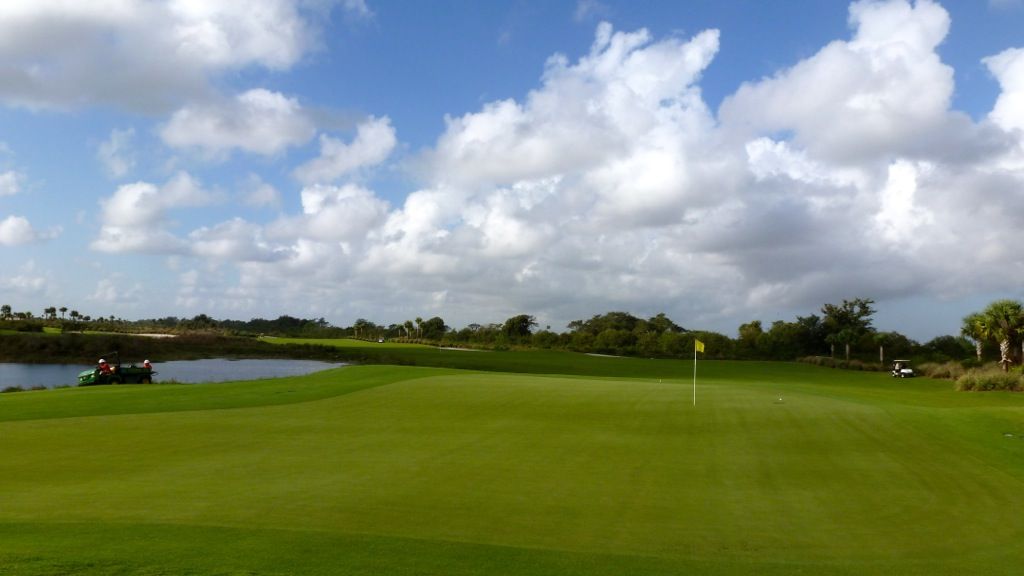Boca Raton, Florida, United States
Architects: Jeff Grossman, Roy Case (2010)
6,786 Yards, Par-72
Rating/Slope: 72.6/136
My Quick Review: A handful of strong holes and a couple of head-scratchers make Osprey Point slightly better than average.
The Palm Beach County owned Osprey Point Golf Course is a fairly new addition to Florida golf, opening in late 2010. Greens and fairways are grassed with paspalum, which I found had little to no grain but also was a very sticky and slow surface.
A 4 is perhaps a generous Doak Score as I'm not convinced that the golf course is superior to the average golf course in the world (even if it is superior to the average golf course in Florida). There are a handful of very good holes, but the majority of the golf course is typical Florida golf -- all-carry over hazard par-3s, tightly dog-legging par-4s and double-hazard carries on par-5s. The terrain at Osprey Point had been described to me as 'wildly undulating.' I didn't see that. The land is quite flat but there are several raised greens that give the feel of elevation. No homes on the golf course is nice, though.
Osprey Point is a 27-hole facility, but I only was able to play 18 holes -- the Hawk and Falcon 9s.
The golf course starts with a tremendous short par-4, and based on the quality of this hole I thought I was in for a very interesting day. Play left over the fairway bunkers and leave a simple pitch to an angled green, but play right and the approach must be played over a mound ready to kick-away slightly mis-struck shots.

The second hole is a dull and narrow par-5 with a very good and very large green. While the green tilts right, the shape of the green bends left making left pins (as pictured) a real challenge.

The 6th is a very reachable in two par-5. Playing near the bunker on the right leaves a much shorter approach to a difficult elevated green protected by a trio of bunkers.

The 7th is a truly reachable par-4, playing under 250 yards from the middle tees. Fore-shortening bunkers on the left not only make depth perception difficult, but are a terrible place to hit a second shot from.

The 8th is a long par-3 that is typical water-carry hole but for the angled green and abundance of fairway cut surrounding it.

Moving to the Falcon nine, the golfer will immediately notice the relative narrowness of the fairways. Falcon begins with a pair of mid-length and downwind par-4s that offer sufficient width but any shot missing left or right of the fairway is likely a lost ball. The approach to a raised green at the 10th:

And the tee shot at the 11th:

The 12th is a very typical par-5 with a green guarded short by water, but an interesting green makes the hole. The green rises in its front half before falling from front-to-back in the rear. The 12th green as seen from behind:

The 13th is a truly bizarre par-4. It is only 280 yards to reach the green on a straight-line, but a carry of 250+ yards is required to clear a fronting hazard. Those laying-up must play a shot of 190 yards or less to stay short of the hazard. The approach is mostly blind, with the view blocked out by tall grass

Another raised green at the 15th. Interesting ground movement short of the green could impact play, but the hole is a short-par 4 and I cannot imagine many will purposely play shots that land short of the green.

The 18th is another reachable par-5 that requires two carries over hazard to reach the putting surface.


No comments:
Post a Comment